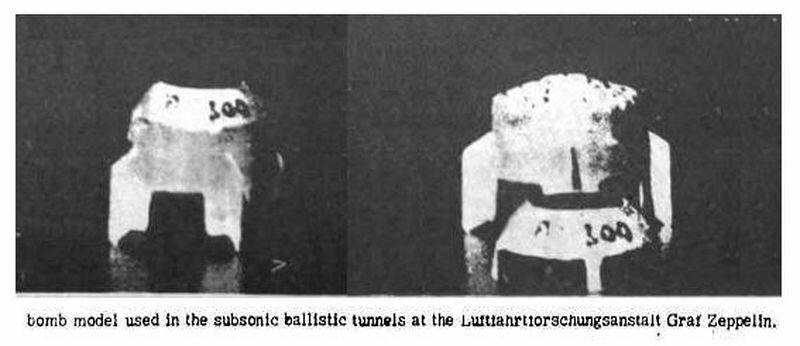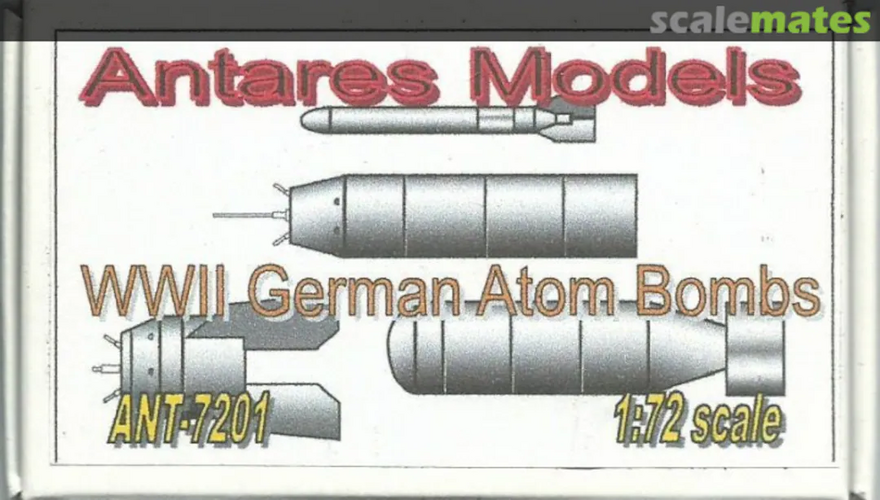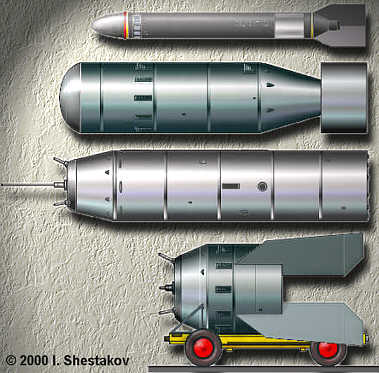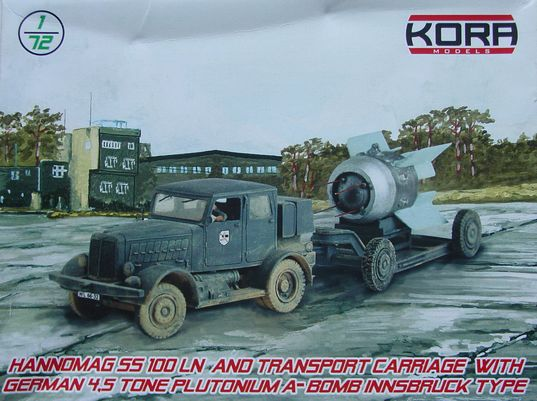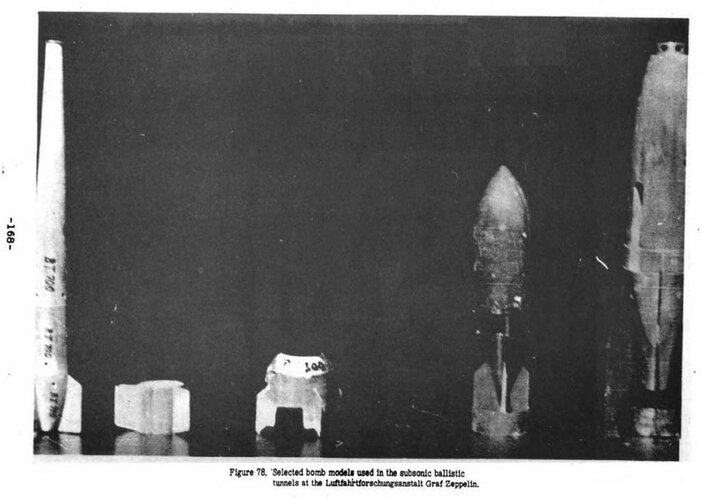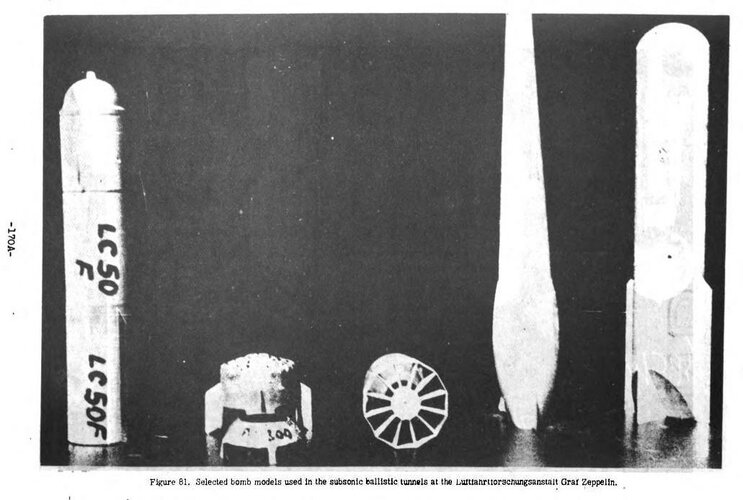You are using an out of date browser. It may not display this or other websites correctly.
You should upgrade or use an alternative browser.
You should upgrade or use an alternative browser.
German bomb id ?
- Thread starter klem
- Start date
T. A. Gardner
ACCESS: Top Secret
- Joined
- 18 February 2021
- Messages
- 909
- Reaction score
- 1,542
Dilandu
I'm dissatisfied, which means, I exist.
Frankly, it looks like the tail part of the bomb without warhead. May it be that it's just a part of model?
T. A. Gardner
ACCESS: Top Secret
- Joined
- 18 February 2021
- Messages
- 909
- Reaction score
- 1,542
klem
I really should change my personal text
- Joined
- 7 March 2015
- Messages
- 624
- Reaction score
- 1,264
Thanks dear T.A.Gardner for your help. I have often seen on the net these kit pictures representing an atomic bomb model. However, without any reference, and comparing them with the model I posted, one notices some inconsistencies, notably the size scale which I find a bit exaggerated on the kit (to say that it is an atomic bomb). I think it is a different type of bomb but not an atomic one and to get a very accurate idea of the size of the bomb (even if it is a wind tunnel model) compared to other wind tunnel model bombs shown in the same picture, I attach here the pictures in their entirety from (German Scientific Establishments-Report of Colonel Leslie E. Simon-Mapleton House, Publishers.1947)
Attachments
T. A. Gardner
ACCESS: Top Secret
- Joined
- 18 February 2021
- Messages
- 909
- Reaction score
- 1,542
Well, there's plenty of obscure German projects out there. For example, there are the Dr. Steinmann (working in the RLM) aerial mines for attacking Soviet hydroelectric dams. There were two versions:
Winterballon: An SC 1000 bomb with a parachute and a inflatable float on the tail activated by a CO2 cartridge. A cable cutting device was fitted to the bomb's nose. The intent was this bomb would float in the reservoir of the dam, riding in over or through any nets present and be drawn into the turbine intakes.
Sommerballon: A similar device but now intended to creep along the lake bottom.
Both went so far as to be unsuccessfully tested on a frozen lake near Finse Lappland Finland being dropped from a He 111. Despite the failures in testing both were produced in some quantity and were available for use in late 1944. Of course, by then their use was moot as the target dams were no longer in range of remaining German bombers.
Winterballon: An SC 1000 bomb with a parachute and a inflatable float on the tail activated by a CO2 cartridge. A cable cutting device was fitted to the bomb's nose. The intent was this bomb would float in the reservoir of the dam, riding in over or through any nets present and be drawn into the turbine intakes.
Sommerballon: A similar device but now intended to creep along the lake bottom.
Both went so far as to be unsuccessfully tested on a frozen lake near Finse Lappland Finland being dropped from a He 111. Despite the failures in testing both were produced in some quantity and were available for use in late 1944. Of course, by then their use was moot as the target dams were no longer in range of remaining German bombers.
T. A. Gardner
ACCESS: Top Secret
- Joined
- 18 February 2021
- Messages
- 909
- Reaction score
- 1,542
Yea, if that's its size compared to things like a BT 700 (extreme left in first photo), it's far too small to be a nuclear weapon. My guess is that it's a solid stage booster for some other bomb or missile.Thanks dear T.A.Gardner for your help. I have often seen on the net these kit pictures representing an atomic bomb model. However, without any reference, and comparing them with the model I posted, one notices some inconsistencies, notably the size scale which I find a bit exaggerated on the kit (to say that it is an atomic bomb). I think it is a different type of bomb but not an atomic one and to get a very accurate idea of the size of the bomb (even if it is a wind tunnel model) compared to other wind tunnel model bombs shown in the same picture, I attach here the pictures in their entirety from (German Scientific Establishments-Report of Colonel Leslie E. Simon-Mapleton House, Publishers.1947)
- Joined
- 6 September 2006
- Messages
- 4,368
- Reaction score
- 7,631
Does the 300 refer to its intended weight in kilos?
300kg would be a fairly small bomb, it could perhaps be a booster stage for a larger bomb or maybe a frag/cluster weapon of some kind?
300kg would be a fairly small bomb, it could perhaps be a booster stage for a larger bomb or maybe a frag/cluster weapon of some kind?
Grzesio
ACCESS: Secret
Wind tunnel models are not made to uniform scale, their size rather corresponds to the wind tunnel.Yea, if that's its size compared to things like a BT 700 (extreme left in first photo), it's far too small to be a nuclear weapon. My guess is that it's a solid stage booster for some other bomb or missile.
Last edited:
T. A. Gardner
ACCESS: Top Secret
- Joined
- 18 February 2021
- Messages
- 909
- Reaction score
- 1,542
I was assuming they were all made for the same wind tunnel and would be correspondingly to scale.Wind tunnel models are not made to uniform scale, their size rather corresponds to the wind tunnel.Yea, if that's its size compared to things like a BT 700 (extreme left in first photo), it's far too small to be a nuclear weapon. My guess is that it's a solid stage booster for some other bomb or missile.For example in the 2nd photo in the post #5 there are LC 50 flare and AB 70 cluster bomb, which are some 110 cm long in real life, plus something looking like a WLK bomb torpedo, also a couple of metres (say, 350 cm) long.
Dilandu
I'm dissatisfied, which means, I exist.
Likely so.Does the 300 refer to its intended weight in kilos?
Its possible that only the part of actual number survived (the "3" on photo looks quite like smeared "8"), and the bomb may actually be heavier300kg would be a fairly small bomb, it could perhaps be a booster stage for a larger bomb or maybe a frag/cluster weapon of some kind?
klem
I really should change my personal text
- Joined
- 7 March 2015
- Messages
- 624
- Reaction score
- 1,264
Very interesting, Winterballon-Sommerballon german projects, I would love to see this in a thread, are there any documents available on the subject?Well, there's plenty of obscure German projects out there. For example, there are the Dr. Steinmann (working in the RLM) aerial mines for attacking Soviet hydroelectric dams. There were two versions:
Winterballon: An SC 1000 bomb with a parachute and a inflatable float on the tail activated by a CO2 cartridge. A cable cutting device was fitted to the bomb's nose. The intent was this bomb would float in the reservoir of the dam, riding in over or through any nets present and be drawn into the turbine intakes.
Sommerballon: A similar device but now intended to creep along the lake bottom.
Both went so far as to be unsuccessfully tested on a frozen lake near Finse Lappland Finland being dropped from a He 111. Despite the failures in testing both were produced in some quantity and were available for use in late 1944. Of course, by then their use was moot as the target dams were no longer in range of remaining German bombers.
T. A. Gardner
ACCESS: Top Secret
- Joined
- 18 February 2021
- Messages
- 909
- Reaction score
- 1,542
The only place I've ever seen them mentioned is here:Very interesting, Winterballon-Sommerballon german projects, I would love to see this in a thread, are there any documents available on the subject?Well, there's plenty of obscure German projects out there. For example, there are the Dr. Steinmann (working in the RLM) aerial mines for attacking Soviet hydroelectric dams. There were two versions:
Winterballon: An SC 1000 bomb with a parachute and a inflatable float on the tail activated by a CO2 cartridge. A cable cutting device was fitted to the bomb's nose. The intent was this bomb would float in the reservoir of the dam, riding in over or through any nets present and be drawn into the turbine intakes.
Sommerballon: A similar device but now intended to creep along the lake bottom.
Both went so far as to be unsuccessfully tested on a frozen lake near Finse Lappland Finland being dropped from a He 111. Despite the failures in testing both were produced in some quantity and were available for use in late 1944. Of course, by then their use was moot as the target dams were no longer in range of remaining German bombers.
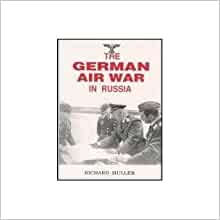
Grzesio
ACCESS: Secret
Winterballon, Sommerballon and Wasserballon bombs are also covered by Wolfgang Fleischer's Deutsche Abwurfmunition bis 1945 (not to be confused with his Deutsche Abwurfmunition im Zweiten Weltkrieg).
Temistocle
ACCESS: Secret
- Joined
- 9 December 2009
- Messages
- 209
- Reaction score
- 420
You can find some info in the "OP1673a German Underwater Ordnance" (I have the complete pdf file, but is 50 MB...), but extracts are available in the following links:
Winterballon
Wasserballoon
Some other info here:
Forum der Wehrmacht
Winterballon
Wasserballoon
Some other info here:
Forum der Wehrmacht
Similar threads
-
Schmidding WW2 "Telescopic bomb".1943
- Started by klem
- Replies: 11
-
German experimental guided bomb ID
- Started by Grzesio
- Replies: 24
-
-
"SHL-6000" WW2 German Bomb project
- Started by moin1900
- Replies: 17
-

